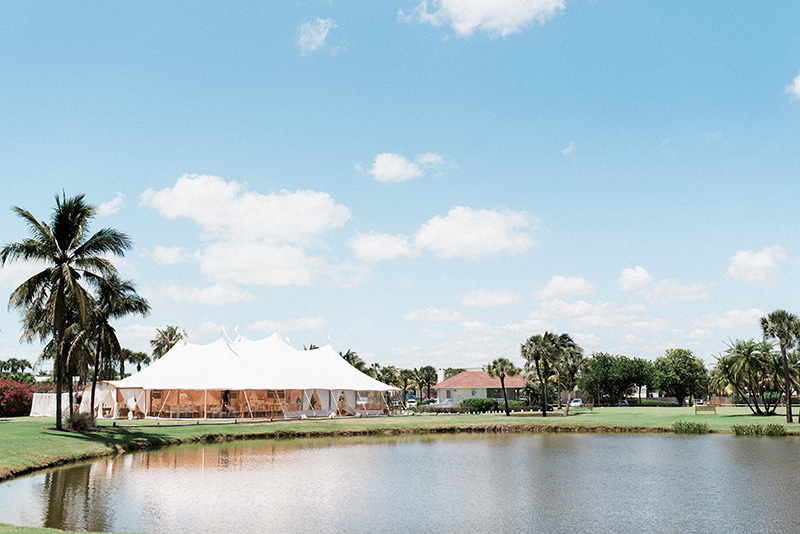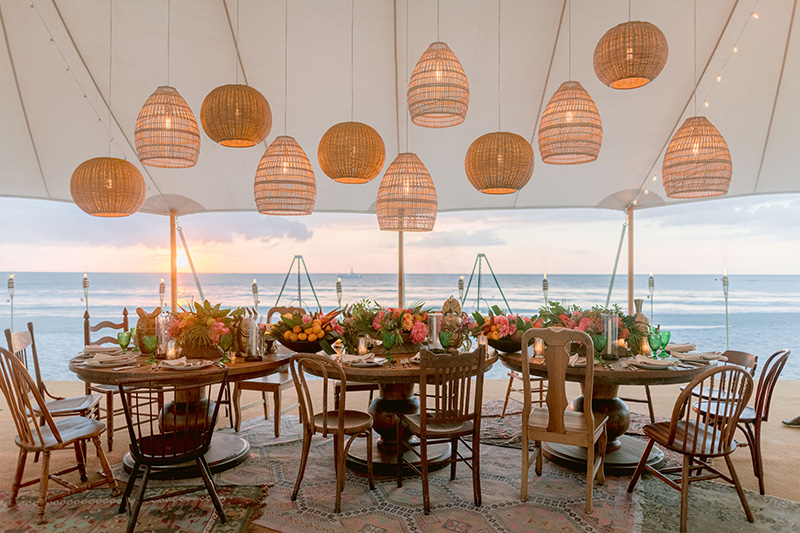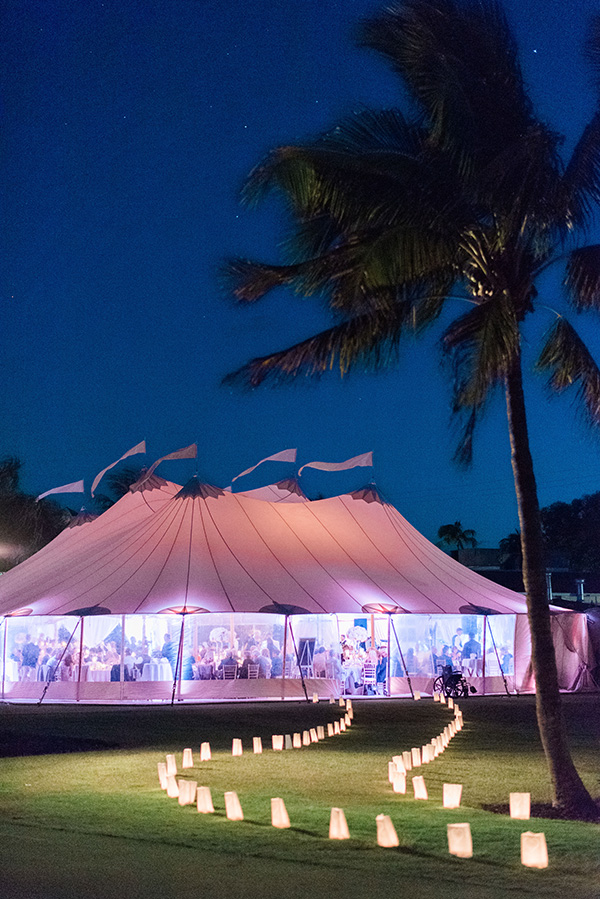Just getting started with your planning?
Here is some expert advice to get you started:
Tent Size
The initial step in a tented wedding is figuring out the right tent size for your reception. First, we will ask for your guest count, dining style (seated, buffet), whether you need a dance floor or a stage for a live band, and if you have any additional space requirements (lounge area, etc.). One large reception tent to hold dinner and dancing is a classic arrangement; however, some couples choose different size tents for different purposes, creating a series of destinations for their guests.

Tent Style
Your tent is your venue, and its style plays a huge role in the look and feel of your wedding, particularly in photographs and video. Remember: A Sperry Tent is the industry’s only rental tent crafted from genuine sailcloth (other “sailcloth” tents on the market are manufactured out of vinyl). Our durable ivory sailcloth has a soft natural look and is translucent to event lighting, producing that trademark #sperryglow at night.
Tent Lighting
Lighting is an important factor in your wedding’s overall style. Classic choices include copper onion lanterns, Asian lanterns, chandeliers, and bistro strings. For higher-budget weddings, it’s not uncommon for a couple to bring in a specialized lighting or décor company to create a truly customized look. I personally recommend thinking about day and evening: pick light fixtures that look pretty in the daytime, but create a different mood for evening and dancing with some colored uplighting on the canopy or downlights on the dance floor.

Flooring
You’ve seen it and you want it: the fully floored tent. It’s the ultimate in luxury for an outdoor wedding and ensures comfort under foot for everyone in attendance. A full floor is a high budget item, and highest of all is a raised floor installed on an engineered platform to position a tent perfectly on a sloping lawn or coastal bluff. We’ve floored over uneven lawns, tennis courts, even pools…but keep in mind that most couples have their receptions directly on lawn with plenty of wooden dance floor to spare.

Catering
You’ll want to consult with your caterer on all aspects of your tent plans. First, figure out where the catering staff will work during the reception, whether it’s in a venue’s kitchen, a residential kitchen, or a garage. If an indoor setting isn’t possible, then you’ll need a dedicated catering/cook tent near the main reception tent. Joining the two via a covered walkway in case of rain/wind is a good idea. Overall, caterers are familiar with tented events and will offer suggestions as to their ideal cook tent size: usually about 400 square feet or more. Involve them in the process to make sure their needs are met.

Power
Almost every vendor who makes an outdoor event happen requires power. The tent lights, catering equipment, portable bathrooms, and the band or DJ are the principal power users, and keep in mind that a couple extension cords and the available outlets in your garage might not suffice. Be prepared for each vendor’s power usage and ask how many dedicated circuits they require. At a private residence, it’s smart to have an electrician install a special panel for the wedding’s power use (it can be removed afterwards). Or, if the tents are placed in a field or lawn away from a power source, a generator will be required.
Logistics
As a general rule, you want the tent up before the party rentals and décor arrives, and you want the party rentals and décor gone before the tent comes down. Check with your venue on when your tent can go up and when it needs to come down. You never know—it might require a quick turnaround depending on how many weddings it’s hosting on a given weekend. Planning all of this out in advance is well worth the effort to avoid last-minute headaches and fees.
Get Creative
Some ways that couples have gotten creative with their outdoor weddings is by creating a show-stopping tent entrance. Our Sperry Arch makes for an elegant gateway into the tent and is the perfect blank slate for florals and drapery. Another unique detail is to apply drapery curtains to perimeter poles, which results in a softer, more romantic tent silhouette.
For the ultimate in creativity, couples can hire a décor company to make their vision come to life. We’ve seen waves of ribbons dotted with paper butterflies, disco balls grouped over dance floors, and custom light displays projected onto canopies. We personally love—in addition to a large reception tent—using smaller tents to act as fun destinations for kids’ crafts, cocktails, lounging, and more. Successful wedding décor is all about what makes you happy.

Parting Advice
Consider investing in an attendant to be onsite during the reception. Yes, it’s an extra line item, but the benefit of having a professional roll the tent sides up or down upon request or attend to equipment snafus immediately is priceless.
